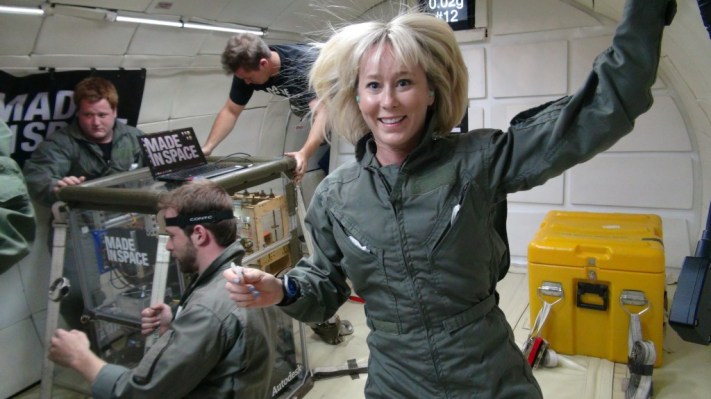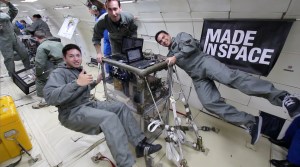This week we learned that NASA was sending its own 3D printer into space to support the astronauts on the International Space Station. But NASA didn’t build the printer. Instead they farmed it out to a company called Made In Space, a startup focused on making a solid, space-ready 3D printer that can survive the vast darkness of the cosmos.
That company has a great sense of humor and wanted to talk a little bit more about their product and the printer. In fact, they explained that they are currently working on a closed loop system that would allow the astronauts to reuse plastic over and over again in the printer. I spoke with the founders of Made In Space, Aaron Kemmer, Jason Dunn, and Mike Chen, about their new product and what it feels like to be the first additive manufacturing company to send their product into orbit.
TC: Let’s start with this question… How can you be sure the printer won’t become sentient and lock the pod bay doors?
Made In Space: I’m sorry, Dave. I’m afraid I can’t answer that.
TC: Tell us about the printer. Why is it special?
MIS: Our printer will be the first device to ever manufacture anything off of the Earth.
This milestone is significant because up until now, everything that is needed in space must be made on Earth and then launched to space, which is an incredibly expensive and time-consuming process. This is a tremendous impediment to progress in the space industry, and is also one of the primary factors that makes space missions so risky. You really need to plan for every contingency ahead of time.
In 2014, When our 3D printer starts manufacturing parts on-demand in space, NASA and other space entities will have the capability to repair their space missions on the fly if something goes wrong.
Astronauts will be able to create new parts as-needed on the station in a matter of minutes or hours, instead of waiting months to years for the needed parts to arrive on station. This will speed up development time, accelerate the innovation cycle, and increase the safety of space missions.
TC: Why didn’t you just buy a Makerbot and fly it into space?
MIS: When we started to bring additive manufacturing to space, we originally looked at adapting commercial off-the-shelf 3D printers. In 2011, we conducted in-depth testing of off-the-shelf 3D printers in microgravity. The results of our testing clearly indicated that no 3D printers designed for terrestrial use were fit for the space environment.
There are quite a number of significant differences between a 3D printer designed for use on Earth and one that is fit for use in space. We have had the good fortune of working with and employing quite a few highly experienced aerospace engineers with extensive experience creating space-ready hardware.
Not only does the printer need to work in extended microgravity, but it needs to be capable of surviving the extreme forces imposed on it during launch, and meet a very long list of NASA imposed requirements to fly hardware to the International Space Station. These are just some of the developments we’ve needed to make. It’s taken us thousands of pages of internal documentation just to describe the engineering work we’ve done to get our printer ready for space.
TC: How are you associated with NASA? NASA spins of companies now? Like Tang?
MIS: NASA is one of our customers. It is common for NASA to contract private companies to provide products and services for space exploration. A good example is Boeing. One of the most featured in the media these days is SpaceX, who is now delivering goods for NASA to the Space Station on their rockets.
The “new space” industry is getting more exciting with every passing year, where startups in Silicon Valley like Made in Space are working with NASA and other groups to push the envelope of what is possible with space missions.
TC: How did you test this for space travel?
MIS: The process starts with an extensive suite of modeling and simulation tools that we use to run analyses on every detail of our design.
The primary way that we test our hardware for space travel, though, is by repeatedly testing our systems in an actual microgravity environment, on parabolic aircraft flights through the NASA Flight Opportunities Program. To date we’ve accumulated over 500 parabolas of zero-gravity manufacturing time.
We also put our printer through rigorous environmental testing with NASA at Marshall Space Flight Center, where we test everything from electromagnetic interference and radiated emissions, the ability to survive launch vibrations, crew safety, and just about everything in-between.
We now have over a dozen full-time employees and a team of 20+ people.
TC: So this is very important: will they ever print a Yoda in space?
MIS: We asked our team, and they told us that they would try. We told them “do or do not, there is no try.”

